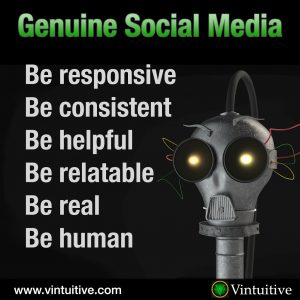The article, Women scholars’ experiences with online harassment and abuse: Self-protection, resistance, acceptance, and self-blame (2018) by Veletsianos, Houlden, Hodson and Goose, outlines key concerns that face educators who use social media. The reader of this research would be primarily educators, researchers and stakeholders. This research was comprised of qualitative data due to using interviews to assess information. The use of this research was to determine the effects of online harassment and abuse on the abused. It states that “women scholars cope with harassment in ways that are consistent with how women in general cope with it, although scholars may face institutional and peer pressures to be online due to their work” (Veletsianos et al., 2018, p. 4702).
This article provides another consideration to social media in contrast to DeGroot, Young, and VanSlette’s article Twitter Use and its Effects on Student Perception of Instructor Credibility (2015). DeGroot et al. provides a framework that paints social media as a positive opportunity to be seen as a more credible educator by students. Whereas, Veletsianos et al. focuses on the potential hazards of using a social media account as an educator. These two articles, demonstrate the delicate balance that is needed when using social media as an educator. This idea of a delicate balance is one that is difficult to grapple with. The idea of being able to broaden the horizons of a classroom through using everyday technology is exciting. However, the unforeseen retaliation that can occur is one that can effect an educator for life. The question begs, is using social media worth it or not?

“Genuine Social Media” by Vintuitive is licensed under CC BY 2.0
Whether an educator or anyone engages in social media or not, it is imperative that “prevention measures” such as “training and resources to develop self-protective abilities” (Veletsianos et al., 2018, p. 4702) are available to all people. This understanding of social media should not simply be presented to educators but to all citizens who engaged in using it. Furthermore, it is not simply the idea of prevention that needs to be in place but also the specific and directed modelling of positive social media use. Technology will not cease to exist but instead it will continue to grow and develop. Thus, as educators and a society as a whole, it’s important take it upon ourselves to use it in ways that positively impact the world. We cannot shy away from it and we cannot run from it, so let’s embrace it and allow it to be a way in which we positively connect with one another.
I agree that its not just about teaching people to prevent online harassment, but it is also important to educate EVERYONE on positive social media use. Especially in a professional setting.
That’s an interesting and on-point comparison between Velestianos versus DeGroot. I had assumed online harassment to female scholars in Velestianos’ article would be from other scholars or “adults”, not from children / teens / students being curious about who their teacher is. However, if your students saw how said educator was treated, would they still have a positive outlook of them as DeGroot et al. had found? Furthermore, we would also be teaching them the negative aspects of online community and relations if they see that not even respectable scholars are safe from bullying.